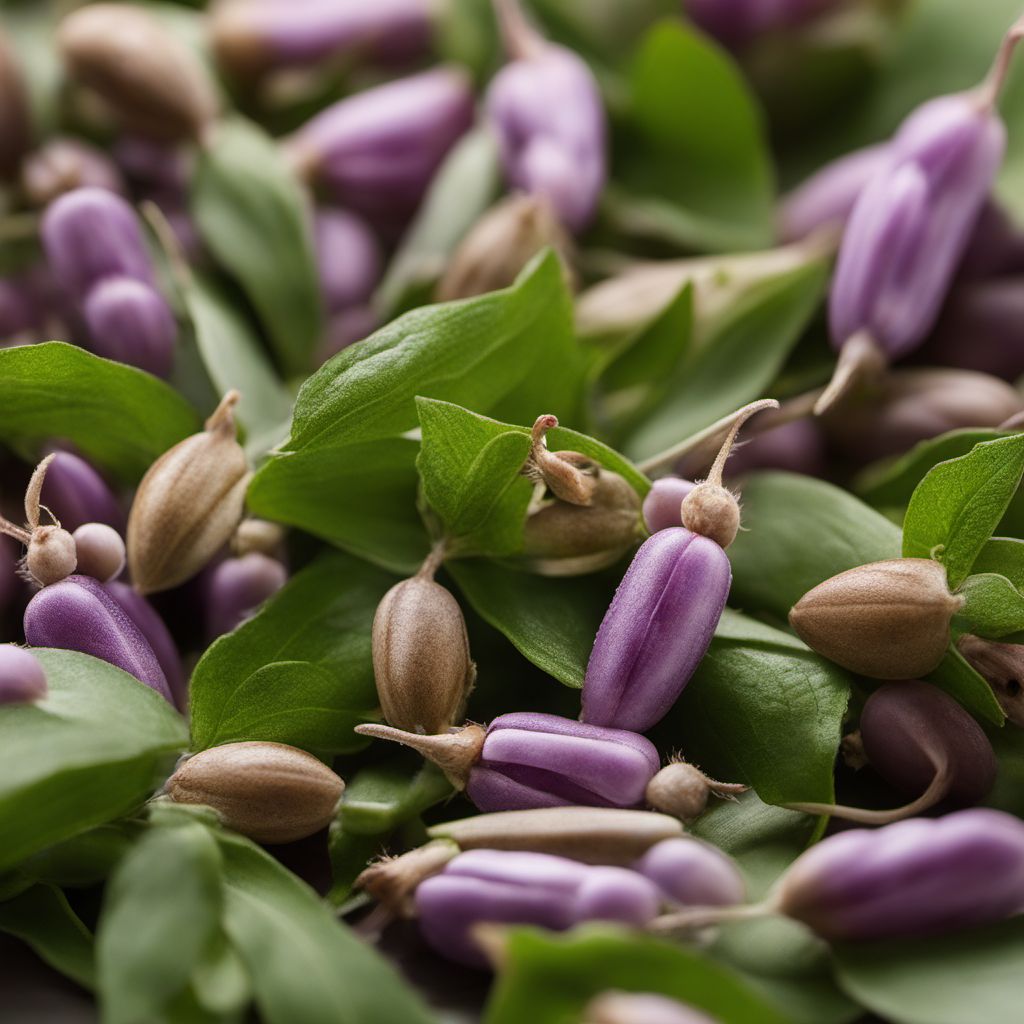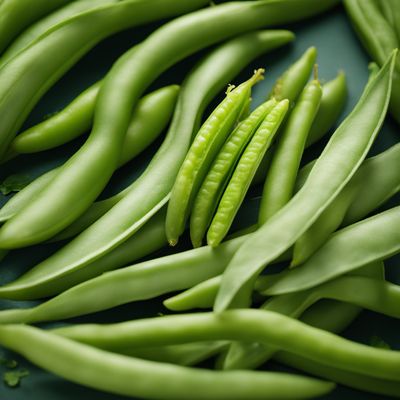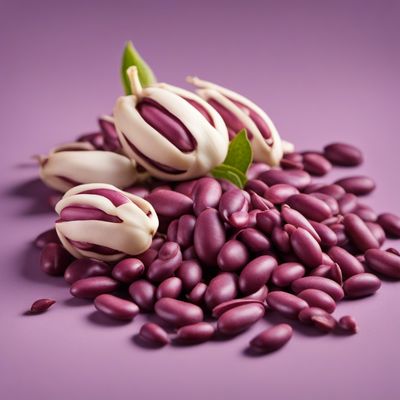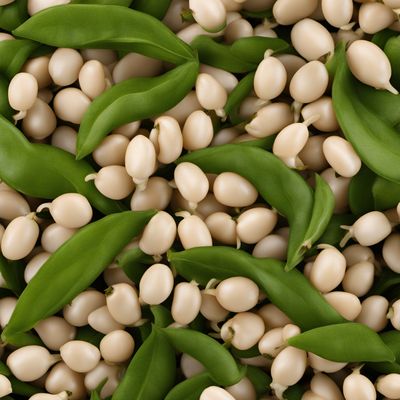
Ingredient
Monantha vetches (with pods)
The Podded Delight
Monantha vetches are legumes that feature long, slender pods with distinctive wing-like protrusions. The pods are crisp and tender, providing a satisfying crunch when consumed. Inside the pods, small seeds are nestled, which have a creamy and nutty flavor. The seeds have a smooth texture when cooked, making them suitable for a variety of dishes.
Origins and history
Monantha vetches have a rich history and are native to Southeast Asia. They have been cultivated for centuries in countries like Indonesia, Malaysia, and the Philippines. These legumes are highly valued for their versatility and nutritional content. In traditional cuisines, they are used in stir-fries, curries, and soups. Monantha vetches are also known for their ability to fix nitrogen in the soil, making them beneficial for crop rotation and sustainable farming practices.
Nutritional information
Monantha vetches are a good source of protein, dietary fiber, and essential vitamins and minerals. They are low in calories and fat, making them a healthy addition to meals. The pods are rich in vitamin C, while the seeds provide iron and calcium. Incorporating Monantha vetches into your diet can contribute to a well-rounded and nutritious eating plan.
Allergens
Monantha vetches may cause allergic reactions in individuals with legume allergies. It is advisable to exercise caution and consult a healthcare professional if you have known allergies or sensitivities to legumes.
How to select
When selecting Monantha vetches, look for fresh, vibrant pods that are free from blemishes or discoloration. The pods should be firm and snap easily when bent. Avoid pods that are overly mature or have signs of wilting. Additionally, check for any signs of insect damage or mold. Opt for organic or locally sourced Monantha vetches whenever possible to support sustainable farming practices.
Storage recommendations
To maintain the freshness of Monantha vetches, store them in a perforated plastic bag or airtight container in the refrigerator. The pods can be kept for up to a week, while the seeds should be consumed within a few days. Avoid washing the pods before storage, as excess moisture can lead to spoilage. Before cooking, rinse the pods and seeds thoroughly under cold water to remove any dirt or debris.
How to produce
Monantha vetches can be grown in home gardens or small-scale farms. They require a warm and tropical climate to thrive. Plant the seeds in well-drained soil and provide adequate sunlight and water. Regularly prune the plants to promote healthy growth and prevent overcrowding. Harvest the pods when they are young and tender for the best flavor and texture.
Preparation tips
Monantha vetches can be prepared in various ways. The pods can be blanched, stir-fried, or added to salads for a crunchy and refreshing element. The seeds can be boiled, steamed, or roasted and used in soups, stews, or as a protein-rich addition to grain bowls. Experiment with different seasonings and spices to enhance their natural flavors. Monantha vetches can also be pickled or fermented for a tangy and unique taste. Remove the wing-like protrusions before cooking, as they can be tough and fibrous.
Culinary uses
Monantha vetches are commonly used in Southeast Asian cuisines, particularly in dishes from Indonesia, Malaysia, and the Philippines. They are often stir-fried with garlic, ginger, and soy sauce, or incorporated into curries and soups. Monantha vetches can also be added to salads, spring rolls, or used as a filling for dumplings. Their versatility allows them to be used in both vegetarian and meat-based dishes, providing a nutritious and flavorful component.
Availability
Monantha vetches are primarily cultivated and consumed in Southeast Asian countries such as Indonesia, Malaysia, the Philippines, and Thailand. They can also be found in specialty Asian grocery stores or markets in other regions.
More ingredients from this category » Browse all

Yardlong beans (with pods)
The Versatile Veggie: Exploring Yardlong Beans

Broad beans (with pods)
The Verdant Gems: Exploring the World of Broad Beans

Slicing bean (young pods)
The Versatile Delight: Exploring the World of Slicing Beans

Lablab beans (with pods)
The Versatile and Nutritious Lablab Beans: A Pod of Health and Flavor

Mat bean (young pods)
The Green Gems of Legumes

Vetches (with pods)
The Versatile Vetches: Pods Packed with Potential

Sword bean (young pods)
The Versatile Bean of the Tropics

Stink beans (with pods)
The Pungent Delicacy: Stink Beans

Ervils (with pods)
The Versatile Legume: Ervils

African locust bean (with pods)
The African Umami

Jack beans (with pods)
The Versatile Legume: Jack Beans with Pods

Black eyed peas (with pods)
The Versatile Delight: Exploring the World of Black Eyed Peas with Pods